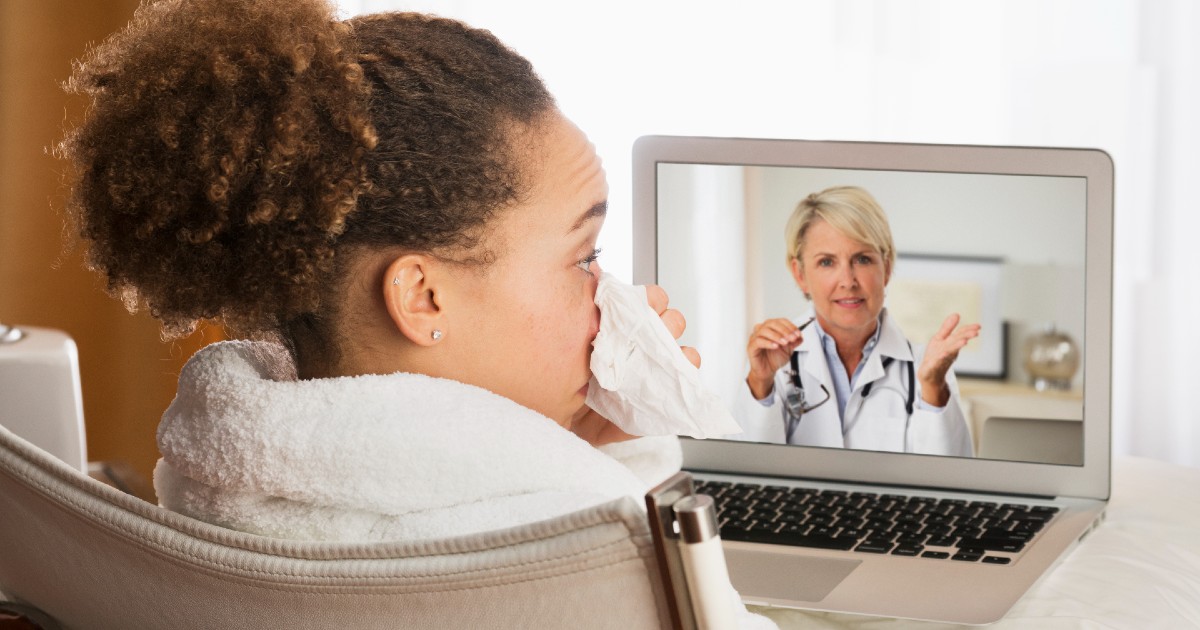Kat Jercich
But scientists say that some tools may hold promise for modestly reducing common psychological symptoms – and that more research is warranted.
According to the International Committee of the Red Cross, some of the data belonged to "highly vulnerable" individuals, including missing persons and their families.
Dr. Maulik Majmudar discusses the use cases for virtual care, including for patients with chronic conditions.
Using machine learning, researchers found that Black patients had higher odds of having at least one negative descriptor in their electronic health record history and physical notes.
2022 Look Ahead
The ECRI Institute's annual report from its Device Evaluation Program reflects enduring ramifications of the pandemic and cautions healthcare leaders about maintaining connectivity.
As more data has emerged about telehealth after the initial spike in March 2020, many industry-watchers, providers and patients are seeking to dig into who's using virtual care – and who's eased off.
But it's not just about the "who," notes Sanjula Jain, chief research officer at the predictive analytics company Trilliant Health. It's about the "why" and "how" too – why are some people sticking with virtual care, and how are they choosing to engage with it?
"When you put the payers together, about 15% of Americans used telehealth during the peak of the pandemic," said Jain in a recent interview with Healthcare IT News.
She said 2020 was a year of "forced adoption" where telehealth was concerned. Patients, out of fear of going to a doctor's office, opted for phone or virtual visits where they could. Now, she said, "we're seeing that tapering."
In Jain's view, telehealth's user base is fairly defined: The most frequent users are commercially insured women ages 30 to 39.
"In a nutshell, telehealth is a commodity good," she said. And of the typical healthcare user profiles, she said, only a few have a propensity to use virtual care.
In other words, she argues, discrete population segments are driving the demand for virtual care.
"There are some consumers who will never engage in telehealth," she said – regardless of ease of access or perceived risk of in-person services.
She believes patients' reasons for using (or not using) telehealth have been largely overlooked.
Yes, many people may face technological hurdles, including broadband, device literacy and tool capacity. But other factors should also be taken into account, such as the fact that hearing loss can disrupt audio-only services, or the social aspects of seeing a doctor in person.
She invites stakeholders to consider the question: "Is there a population that maybe used it once or twice and stopped using it? Let's unpack why.
"If we take an individual user's behavior, and understand those behaviors, that's going to change the equation of how we think about users," she said.
Jain likens user preferences to the typical order sizes at Cold Stone Creamery, a national ice cream chain: "like it," "love it" and "gotta have it."
Translated to virtual care: Some consumers like telehealth, some love it, and some see it as essential.
"People like ice cream, but are different in the way they consume it," she said.
Such segmenting is particularly important considering the influx of players into the telehealth space, particularly over the past few years.
"As an economist, it comes down to the basics of supply and demand," said Jain. In this case, she said, "supply exceeds demand." She believes many companies are banking on a faction of latent demand that will be driven by permanent reimbursement changes.
Others, she said, have built their model on a specific user base, aiming for high utilization.
"It's not to say that virtual care companies won't be successful, but you have to know the bounds of your consumer base," she said. "It doesn't mean you can't build a viable business around it."
Kat Jercich is senior editor of Healthcare IT News.
Twitter: @kjercich
Email: kjercich@himss.org
Healthcare IT News is a HIMSS Media publication.
A new study taking a closer look at surgical consultations early in the pandemic highlighted patterns among individuals who relied on video and audio-only visits.
In a preview of their HIMSS22 session, panelists from the National Cybersecurity Center of Excellence and affiliated federal agencies offer their perspectives on threat landscapes.
A new study finds that only about two-thirds of data types will be "understood" by a receiving site in the most favorable cases.
The agency says the lag is due to an increase in COVID-19 cases among employees, which has complicated training schedules.










